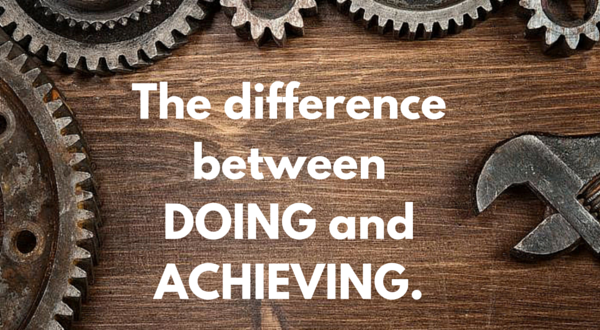The Art and Science of Change
A Change Management Blog
Since 2015, this blog has been a trusted guide for organizational change. We provide practical insights and actionable tips, backed by solid research, to help you lead change initiatives effectively. Make change positive and productive experience for your team and organization.
Want more?
Follow me on LinkedIn, where I post regularly on the latest ideas and research in change.
Explore the unique challenges of AI adoption in organizations, and how to overcome them. This guide offers change leaders practical strategies for building trust, understanding context, and leveraging social dynamics to successfully implement AI solutions.
Effective communication during times of change is essential to organizational change success. We review six research-backed practices to help you do it right.
Learn how to increase the effectiveness and efficiency of organizational change adoption with an implementation team.
Explore what change management is and learn about three essential perspectives—psychological, leadership, and engineering—for driving successful change.
Do you know what organizational change is? How about the three factors that influence it? This article breaks it all down for you.
Research indicates change leadership is key to change success and requires a focus on communication, mobilization, and evaluation.
Measuring change success can be tricky. Here are four things you can do to set yourself up to measure the effectiveness of your organizational change.
Learn more about the complexities of behavior change in organizations and how to support yourself, your team, and the organization to successfully alter what you do and how you do it.
Uncover why organizations struggle with technology ROI despite increased investments. This article explores key factors driving staff adoption of new technology and how understanding these elements can transform your organization's approach to new technology implementation.
Discover the three types of change commitment , how they impact support for organizational change, and what you can do to foster greater staff commitment to make workplace change succeed.
influence is key to developing support for organizational change — but how do you do it right? Learn six influence tactics that research says work — and one to avoid.
A lack of trust is a barrier to successful organizational change. Learn three ways to build and maintain trust throughout the change management process.
Middle managers play a critical role in the success of organizational change efforts. Learn three ways they tackle challenges to create sustained workplace change.
Where do the best change ideas come from? Recent research indicates when middle managers initiate change, it has a much greater positive impact on employee support than when top-level managers initiate change. Read more about this study and find out how your organization can benefit.
Strategic change communicators recognize that creating a shared understanding of an organizational change requires more than just providing information and setting the tone. Effective change communication is a social and multi-dimensional process.
To enable successful organizational change, leaders must recognize and fulfill their unique role in the change effort.
Middle managers play an essential but often under-recognized and unique role in leading organizational change. The demands placed on middle managers during times of organizational change require them to leverage change leadership competencies in novel ways.
Research indicates change leadership is key to change success and requires a focus on communication, mobilization, and evaluation.
Which of the three common change leadership structures is best for your organizational change?
We focus a lot on what makes a good leader; ever thought about what makes a bad leader...a really, really bad leader? It may not be what you think!
Call them myths, wishful thinking, or ideas born from inexperience, either way there are beliefs that executives, managers and even some developing implementers have about implementation that can be major roadblocks to success.
Although research on change has not yielded a definitive way forward, the keys to effective change management may not be that mysterious after all.
The big learning from the Flint crisis is that it was not inevitable, as is often the case with large-scale failure. The opportunity is to identify where and how the trajectory could have been changed and to actively integrate that learning into our own implementation management practices.
Recent research provides important insights on how to adjust change communications to support change commitment when its results in job changes or job loss. Implications for AI adoption are discussed.
Effective communication during times of change is essential to organizational change success. We review six research-backed practices to help you do it right.
Why do some people choose to jump on board with change while others resist? We take a look at some of the factors that play into adoption and explore what you can do to help encourage change in your organization.
Find out how to prepare and manage change in your business through an effective, research-based communication strategy.
When it comes to change communication, it's not just what you say, but who is saying it that matters. Learn how to identify the most credible messengers during workplace change.
Strategic change communicators recognize that creating a shared understanding of an organizational change requires more than just providing information and setting the tone. Effective change communication is a social and multi-dimensional process.
In a word, “Yes”. In this article, we explore why and share how to integrate fairness into your change management approach to increase your chances of success.
Are your change management metrics missing something? Evaluating completion, achievement, and satisfaction provides a holistic view of organizational change success.
Change complexity is driven by the interplay of change impact and readiness. We review the strategic and tactical importance of understanding complexity and how to assess impact and readiness to drive your change approach.
Measuring change success can be tricky. Here are four things you can do to set yourself up to measure the effectiveness of your organizational change.
You need more than goals to achieve results from your organizational change efforts. You need a plan — here's how to do it.
Learn what every leader should know about using goals to boost results in organizational change initiatives.
Setting goals is not enough. Robust research shows us that monitoring and reporting on progress makes a difference in performance. We review the research and how to apply it in this article, originally written for ScienceforWork.
"Go big or go home" may be an increasingly popular goal-setting philosophy, but does it work? In this post, we discuss research on stretch goals as well as alternative goal-setting strategies and provide tips on how to identify which might work best for your situation.
Are you just doing stuff, or actually achieving results with your implementation? In this post, we review the difference between implementation and quality implementation.
Need help applying ideas like these on the job?
A change coach may be just what you need
Learn how to increase the effectiveness and efficiency of organizational change adoption with an implementation team.
When it comes to change communication, it's not just what you say, but who is saying it that matters. Learn how to identify the most credible messengers during workplace change.
Choosing the best tools and strategies to help your organization navigate change requires you to first recognize the kind of change journey you are on. [Case Studies]
When it comes to roles and decision-making on change projects, people often like to keep things fuzzy...it takes more than a template to change that. In this article, I review the evidence linking governance with success, as well as provide models and tips to help you align your governance approach to your context.
Learn key considerations for structuring an effective change implementation team and see them applied in three case studies.
Especially during challenging times, team learning requires honest reflection to identify team behaviors or practices that may be contributing to poor performance. Such conversations can be tricky to facilitate and, for that reason, are often skipped. Don't miss your opportunity to help your team uncover learning that can transform its performance. Here's one way to do it.
Drawing from research on teamwork, this post offers more than 30 things you can do to help your team work better together.
Those of us involved in implementation understand intuitively how critical collective effort is for success. That said, as practitioners, we may not have a firm grounding in what it is, exactly, that helps or inhibits teamwork. If that's the case for you, read on! In this post, we highlight nine factors to consider when working to build an effective team.
A moment of spontaneous reflection led me to this insight: two qualities have been integral to my success in implementation. Patient persistence. In this post, I review why these qualities are particularly useful for those leading long-term change efforts and offer some research-based tips on how to build these qualities and restore them when you feel depleted.
The big learning from the Flint crisis is that it was not inevitable, as is often the case with large-scale failure. The opportunity is to identify where and how the trajectory could have been changed and to actively integrate that learning into our own implementation management practices.
Uncover why organizations struggle with technology ROI despite increased investments. This article explores key factors driving staff adoption of new technology and how understanding these elements can transform your organization's approach to new technology implementation.
Recent research provides important insights on how to adjust change communications to support change commitment when its results in job changes or job loss. Implications for AI adoption are discussed.
Change complexity is driven by the interplay of change impact and readiness. We review the strategic and tactical importance of understanding complexity and how to assess impact and readiness to drive your change approach.
Learn how to build an effective organizational change management strategy by integrating six key change management practices.
Discover the three types of change commitment , how they impact support for organizational change, and what you can do to foster greater staff commitment to make workplace change succeed.
Find out how to prepare and manage change in your business through an effective, research-based communication strategy.
When it comes to change communication, it's not just what you say, but who is saying it that matters. Learn how to identify the most credible messengers during workplace change.
This is an incomplete, (but always growing) list of research articles on key topics related to change management — team performance, goal setting, fairness, failure rates, and more.
What's the secret to motivating people during organizational change? Create an environment where people feel a sense of choice, effectiveness, and belonging. We review the research and offer tips on how middle managers can put it into practice.
Strategic change communicators recognize that creating a shared understanding of an organizational change requires more than just providing information and setting the tone. Effective change communication is a social and multi-dimensional process.
Before you kick off your next organizational change effort make sure you have clear answers to these three questions. Your success may depend on it.
Paradoxes often arise during organizational change and defy either/or choice-making. Learn how to identify and manage paradoxical tensions to create better organizational outcomes.
What makes for effective team decision-making? We can summarize it in one word — diversity.
Context relates to internal and external factors that influence your ability to execute an organizational change. It can make or break your change effort — so read on to learn how to analyze context to support change success.
In a word, “Yes”. In this article, we explore why and share how to integrate fairness into your change management approach to increase your chances of success.
How can you support individual change as part of your broader change management efforts? Understand why and how people change and identify and address change barriers and enablers.
When it comes to roles and decision-making on change projects, people often like to keep things fuzzy...it takes more than a template to change that. In this article, I review the evidence linking governance with success, as well as provide models and tips to help you align your governance approach to your context.
Five reasons the phases of organizational change should be a valued tool in every change manager’s toolkit.
Setting goals is not enough. Robust research shows us that monitoring and reporting on progress makes a difference in performance. We review the research and how to apply it in this article, originally written for ScienceforWork.
Uncover why organizations struggle with technology ROI despite increased investments. This article explores key factors driving staff adoption of new technology and how understanding these elements can transform your organization's approach to new technology implementation.
Learn the answers to six important questions about psychological safety based on the findings from a comprehensive meta-analysis on the topic. Including what it is, why it’s important, and what we don’t yet understand about this important factor in team performance.
A lack of trust is a barrier to successful organizational change. Learn three ways to build and maintain trust throughout the change management process.
Paradoxes often arise during organizational change and defy either/or choice-making. Learn how to identify and manage paradoxical tensions to create better organizational outcomes.
Learn more about the complexities of behavior change in organizations and how to support yourself, your team, and the organization to successfully alter what you do and how you do it.
In a word, “Yes”. In this article, we explore why and share how to integrate fairness into your change management approach to increase your chances of success.
Are you just doing stuff, or actually achieving results with your implementation? In this post, we review the difference between implementation and quality implementation.
Uncover why organizations struggle with technology ROI despite increased investments. This article explores key factors driving staff adoption of new technology and how understanding these elements can transform your organization's approach to new technology implementation.
influence is key to developing support for organizational change — but how do you do it right? Learn six influence tactics that research says work — and one to avoid.
Why do some people choose to jump on board with change while others resist? We take a look at some of the factors that play into adoption and explore what you can do to help encourage change in your organization.
Learn the answers to six important questions about psychological safety based on the findings from a comprehensive meta-analysis on the topic. Including what it is, why it’s important, and what we don’t yet understand about this important factor in team performance.
What's the secret to motivating people during organizational change? Create an environment where people feel a sense of choice, effectiveness, and belonging. We review the research and offer tips on how middle managers can put it into practice.
For those introducing or leading change in an organization, a common goal is to overcome or manage resistance. Alternate strategies encourage us to consider how to proactively build readiness, mitigate potential sources of resistance, and use negative responses to improve our change management practices.
Learn more about the complexities of behavior change in organizations and how to support yourself, your team, and the organization to successfully alter what you do and how you do it.
In a word, “Yes”. In this article, we explore why and share how to integrate fairness into your change management approach to increase your chances of success.
How can you support individual change as part of your broader change management efforts? Understand why and how people change and identify and address change barriers and enablers.
The reactions of consumers and retail workers to the US chip card transition provides insight into the challenges of getting change right, particularly when it requires people to alter routine behaviors.

























![Five key messages for communicating organizational change [Examples]](https://images.squarespace-cdn.com/content/v1/562ff1e1e4b03e9e3d6a1771/1658521183884-1WCD6W6L9CKGXT7KKB2Z/shutterstock_570451324.jpeg)




![How to create a change measurement plan [Examples]](https://images.squarespace-cdn.com/content/v1/562ff1e1e4b03e9e3d6a1771/1595882417649-7TBKWF5TX8Y11C5DH5DH/white-paper-with-note-669986.jpg)




![Use the right change management approach for your organizational change [Case Studies]](https://images.squarespace-cdn.com/content/v1/562ff1e1e4b03e9e3d6a1771/1628791585808-K96JSBD1T1Q4XWOMTXI5/pexels-alex-andrews-1203808.jpg)


![HARD LESSONS: Helping your team learn from failure. [Facilitation Guide]](https://images.squarespace-cdn.com/content/v1/562ff1e1e4b03e9e3d6a1771/1485185938737-PALQUS4635E5YMIXLRBZ/firefighters-fire-flames-outside-69934.jpeg)















Explore the unique challenges of AI adoption in organizations, and how to overcome them. This guide offers change leaders practical strategies for building trust, understanding context, and leveraging social dynamics to successfully implement AI solutions.